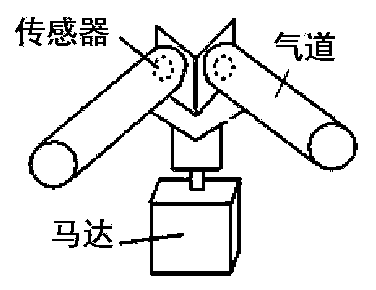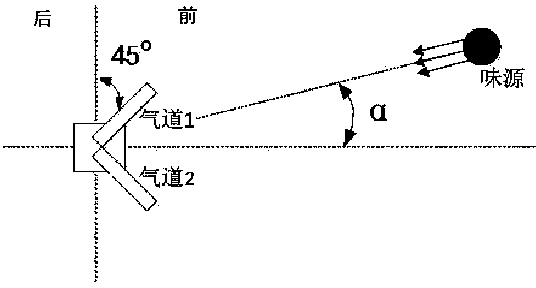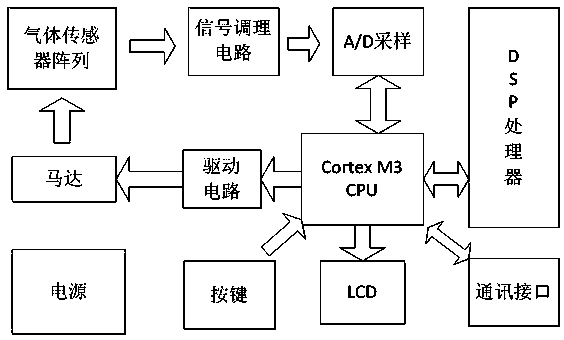Stereoscopic electronic nose for simulating animal olfactory organ structure
A technology of olfactory organs and electronic nose, which is applied in the field of three-dimensional electronic nose-dangerous goods leakage source detector, can solve the problems that it is difficult to adapt to the complex environment of robots, and achieve the effect of enhanced stability and reliability
- Summary
- Abstract
- Description
- Claims
- Application Information
AI Technical Summary
Problems solved by technology
Method used
Image
Examples
Embodiment Construction
[0025] The gas sensing device imitating the nose and neck of a mammal is composed of a gas sensor array, a motor and other auxiliary equipment, such as figure 1 shown. There are two gas pipes (hereinafter referred to as air channels) made of impermeable polyethylene material in the device, one end of each air channel is closed, and a gas sensor is installed on the sealed end. There is an included angle of 90° between the two air passages, so that when one air passage faces the odor plume, the speed at which the odor molecules can diffuse from the outside of the pipe to the sealing end is faster. While the other airway is perpendicular to the odor plume, odor molecules can diffuse from the outside of the pipe to the sealed end at a slower rate. The device composed of gas sensor array and airway is somewhat similar in structure and function to the mammalian nose, and the difference in sensor response in the two airways can reflect the plume orientation. Since the gas sensor ar...
PUM
 Login to View More
Login to View More Abstract
Description
Claims
Application Information
 Login to View More
Login to View More - R&D
- Intellectual Property
- Life Sciences
- Materials
- Tech Scout
- Unparalleled Data Quality
- Higher Quality Content
- 60% Fewer Hallucinations
Browse by: Latest US Patents, China's latest patents, Technical Efficacy Thesaurus, Application Domain, Technology Topic, Popular Technical Reports.
© 2025 PatSnap. All rights reserved.Legal|Privacy policy|Modern Slavery Act Transparency Statement|Sitemap|About US| Contact US: help@patsnap.com



